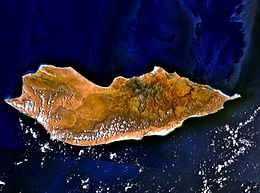Socotra’s Unique Geography That Makes It Look Like Another World
Exploring Socotra, the Mysterious Island in Yemen – Socotra, an island located in the Arabian Sea, has a landscape that is very different from anywhere else in the world. The geography of the Island creates a view that seems to transport visitors to another world. Known as the “lost island,” Socotra is decorated with rugged mountains, vast deserts, and pristine beaches.
One of the most striking geographical features of Socotra is the difference in elevation of its land. The island has towering mountains in the center, while along the coast are unique rock formations that have formed over millions of years of geological processes. This topography creates a very varied microclimate, supporting a variety of ecosystems that are not found anywhere else.
Not only that, but the arid soil of Socotra also supports the life of incredibly unique plant species. One of the most famous is the Dragon’s Blood Tree, with its distinctive umbrella shape. In addition, there are also endemic plants and animals that can only be found on this island, making Socotra a paradise for scientists and nature enthusiasts.
The unique geography of Socotra makes it one of the most mysterious and amazing places in the world, where nature seems to speak in a way that cannot be found anywhere else.
Rare Flora: Dragon Blood Tree and Iconic Plants of Socotra
Socotra, an island located in the Arabian Sea, is famous for its unique biodiversity, especially rare flora that can only be found there. One of the most iconic plants is the Dragon Blood Tree (Dracaena cinnabari), which has a distinctive umbrella shape with wide-spreading branches. This tree is known for its red sap that resembles blood, which is used in various local traditions and as a natural dye.
In addition to the Dragon Blood Tree, Socotra is also home to various endemic plant species that are not found anywhere else in the world. Among other iconic plants are strangely shaped trees, such as the Cucumber Tree and the Socotran Bottle Tree. These plants have adapted to the harsh climate conditions of the island, such as extreme heat and lack of water.
The uniqueness of Socotra’s flora lies not only in its strange shape, but also in the ability of these plants to survive in very extreme conditions. Some plants have a thick protective layer to prevent water evaporation, while others can survive in dry, rocky soil.
The island is an important destination for scientists and botanists interested in studying these rare plants. The beauty of Socotra’s exotic flora provides an extraordinary experience for those who want to see natural wonders that cannot be found anywhere else.
Socotra’s Exotic Fauna: Home to Endemic Species
Socotra, an island located in the Arabian Sea, is not only known for its unique flora, but also as a home to a number of exotic fauna species that are only found there. The island’s biodiversity makes it a paradise for scientists and researchers, as many animals thrive in a very isolated and mysterious environment.
One of the most famous species is the Socotra Lizard, which has bright colors and is often found on the edges of rocks and trees. This lizard plays an important role in maintaining the balance of the local ecosystem by preying on insects and other small animals. In addition, Socotra is also home to the very rare Socotra Birds, including a bird species that can only be found on this island.
Not only reptiles and birds, Socotra is also home to various types of unique insects and arthropods. One of them is the Socotra Millipede, which has a long body and striking colors. The diversity of this fauna is greatly influenced by the extreme climate of the island, where these animals have adapted to survive in very dry and hot conditions.
The presence of this endemic fauna makes Socotra one of the most important places in the study of world biodiversity. The uniqueness of the animals on this island provides insight into how life can thrive in such remote and harsh conditions.
History and Culture: Traditional Socotra People
The people who inhabit Socotra Island have a long history and a rich culture that has developed over thousands of years despite extreme geographic isolation. The island, located in the Arabian Sea, is home to traditional tribes that have maintained their distinctive way of life despite the ever-expanding outside world.
The main tribe on Socotra is the Soqotri, whose unique language and culture are an important part of the island’s identity. The Soqotri language, which belongs to the Semitic language family, is spoken by the majority of the population and is a symbol of their isolated existence. In addition to language, the people of Socotra also maintain a rich oral tradition, including folklore, songs and poetry that are passed down from generation to generation.
The traditional people of Socotra rely heavily on agriculture and fishing as their main source of livelihood. They grow indigenous crops such as tamarind and date palms, and use marine resources to meet their food needs. Their daily lives are heavily influenced by the natural conditions of their surroundings, such as the monsoon winds that influence the seasons and activity patterns.
The Soqotri are also known for their craftsmanship, including weaving from palm fronds and making jewelry from stones and metals. Despite their isolation, the people of Socotra have maintained their customs, creating a unique culture rich in traditional values that still survives today.
